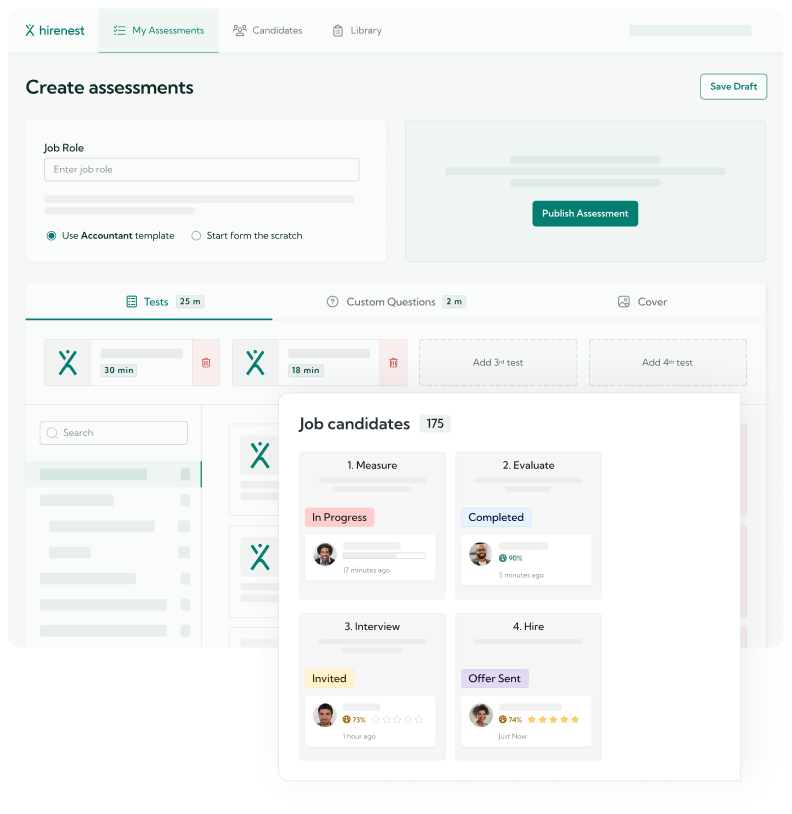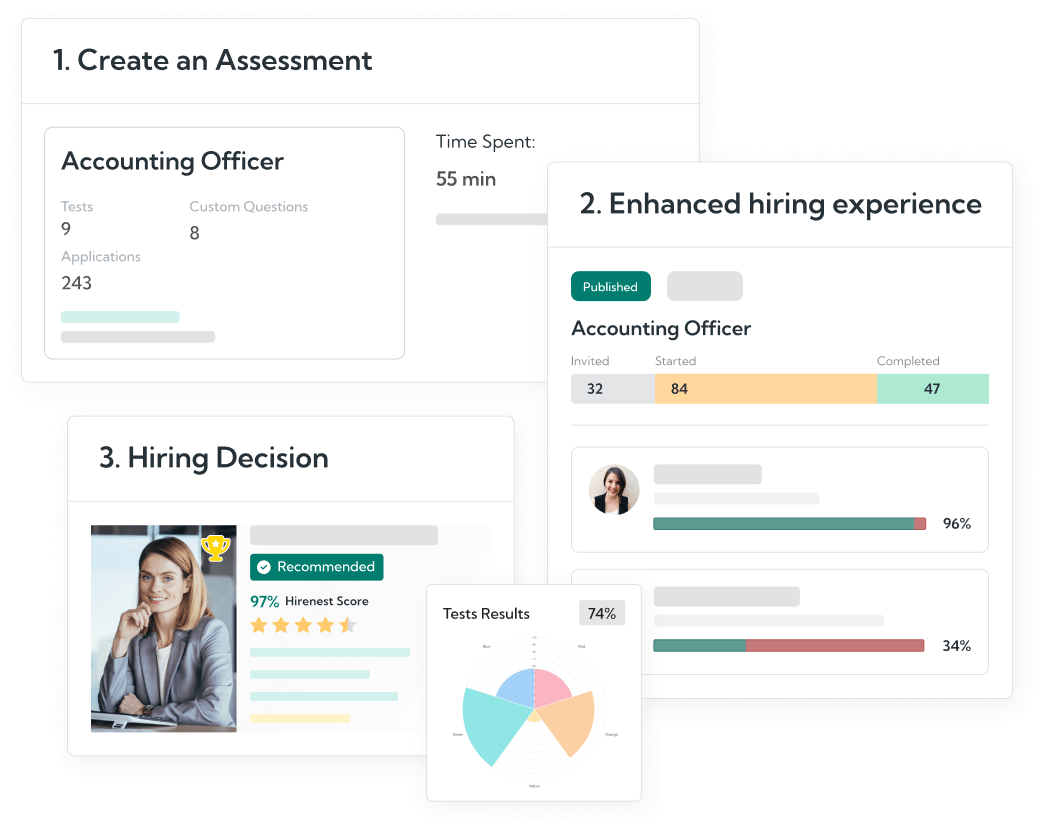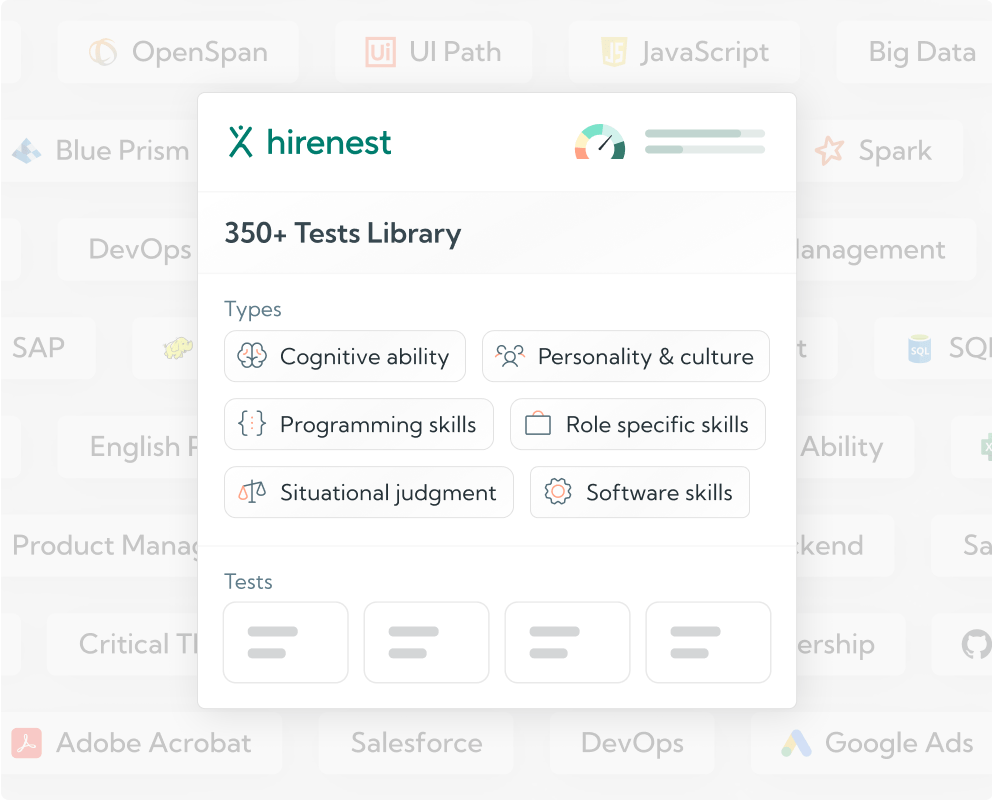Spatial Reasoning Test
Spatial thinking, or reasoning, involves the location and movement of objects and ourselves mentally or physically in space. It’s a category of reasoning skills that refers to people’s capacity to think about objects in three or two dimensions and draw conclusions about them from limited information.
The current test assesses a candidate's ability to mentally visualize and manipulate 2D and 3D objects, spot patterns and relationships between shapes, and visualize movements and changes in those shapes in space. It includes questions that require them to determine which answer option is a rotation of a given 2D or 3D image, a top or front perspective of the object, and understand the relationships between the objects and their features and their position in space.
The test is timed and in a multiple-choice format.
Questions
30
Time
30 min
Level
intermediate
Used
5631

Boost Productivity: Join 2000+ Companies Using Hirenest vs. CV’s

Spatial Reasoning Tests: Unlocking Efficient Talent Evaluation

What does Hirenest's Spatial Reasoning test measure?

All-In-One Solution
Find top-notch talent in a flash!
Hirenest offers a wide range of features to simplify the recruitment process, from a rich library of tests and templates to Al scoring and detailed reports. Additionally, a robust ATS system facilitates actions to further streamline the recruitment process.
Learn more
350+ Tests Libary
Unlock the power of 350+ professionally designed tests!
Hirenest offers an extensive selection of tests to suit all assessment needs. Our tests provide invaluable insights into an individual's cognitive aptitude, role-specific competencies, situational judgment, skill proficiency, and personality.
Learn more
Why use Hirenest's Spatial Reasoning test?

Why Hirenest?
Because we use our own platform.
Yes, we use our own pre-employment assessment platform to build the best team possible. And our efforts have paid off: We've scaled our team to more than 50 fantastic members, testing more than 5,000 along the way. And that team has helped us become one of the premier pre-employment testing companies worldwide. (If only we could've tested our office dogs too; managing their behavior is a challenge!)
60,000 +
Assessments
completed
5,000 +
People hired
45,000 +
Saved hours
for our clients
Problems we solved
74%
of employers admitted to making the mistake of hiring someone unsuitable for a job.
27%
of businesses reported incurring losses of over $75,000 due to incorrect hiring decisions.
50%
chance of a hiring manager making an incorrect hiring choice.
23%
of businesses reported a decrease in output due to an unsuitable hire.
<10%
of unstructured job interviews are effective at predicting the best candidates.
Why does it happen?
hiring is difficult due to reliance on subjective, inconsistent opinions.

Which job roles require the Spatial Reasoning assessment?
Spatial reasoning assessments are necessary for job roles that require a strong ability to solve visual problems and think in three dimensions. This skill test is commonly used in pre-employment screening by HR managers and hiring companies. Our online platform, Hirenest, offers spatial reasoning aptitude tests at an affordable price. These assessments provide examples, questions, and answers that can help interviewers make informed hiring decisions. Enhance your recruitment process and hire the right candidates by utilizing spatial reasoning assessments from Hirenest.